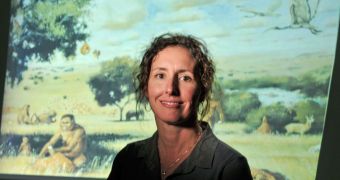According to the conclusions of a new scientific investigation, it would appear that males belonging to two bipedal hominid species were more keen to staying at home, then they were to roaming the savannas. The study indicates that the females of the species were responsible for that.
These discoveries were made in the South African savanna, as researchers were analyzing fossils belonging to these species, in an attempt to extract more knowledge about their lifestyles and habits.
Apparently, these creatures roamed the land more than 1 million years ago, dating techniques indicate. The study was carried out by research scientists at the University of Colorado in Boulder (UCB).
Experts here conducted their work on teeth discovered in a series of adjacent cave systems in South Africa. The fossilized remains belonged to the hominid species Australopithecus africanus and Paranthropus robustus, the team says.
Interestingly, up to 50 percent of all the female teeth that were discovered belonged to individuals who were not born in the area. Only 10 percent of male teeth had the same characteristics, suggesting that the latter preferred to stay at home, living and dying in the same areas.
“One of our goals was to try to find something out about early hominid landscape use. Here we have the first direct glimpse of the geographic movements of early hominids, and it appears the females preferentially moved away from their residential groups,” says Sandi Copeland.
The investigator holds an appointment as an adjunct professor at UCB, and is also the lead author of a new study detailing the findings. The work is published in the June 2 issue of the top journal Nature.
“This is exciting research. The research gives us clues to social organization that has been unavailable. We knew that these species are sexually dimorphic, and now we know that the females left their natal groups, leaving the males in place as close kin,” adds Kaye Reed.
The expert holds an appointment as a physical anthropology program officer at the US National Science Foundation (NSF). The organization provided part of the funds needed for the work
“It is difficult enough to work out relations between the sexes today, so the challenges in investigating the ways that male and female hominids used the landscape and formed social groups over a million years ago are considerable to say the least,” says Matt Sponheimer.
“Disembodied skulls and teeth are notoriously poor communicators, so the real difficulty with a study like this is finding new ways to make these old bones speak,” the UCB anthropology professor concludes.

 14 DAY TRIAL //
14 DAY TRIAL //